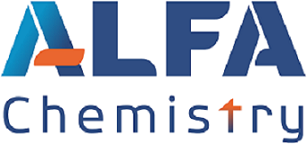| Alfa Chemistry | |
|---|---|
| Country: | United States |
| Tel: | 5166625404 |
| E-mail: | support@alfa-chemistry.com |
| QQ: | |
| Skype: | Chat Now! |
Antibody Detection Raw Materials
Release time: 2024-02-08
Antibodies (also called immunoglobulins) are Y-shaped proteins produced by the body's immune system. They are used by the immune system to recognize and defend against foreign substances (such as viruses). Antibodies play an important role in diagnostics because of their exquisitely affinity, target specificity, designed and engineered nature. SARS-CoV-2 infection can stimulate the body to produce specific antibodies. This means that researchers can determine whether a person has been infected with SARS-CoV-2 by detecting the presence of immunoglobulin G (IgG) or immunoglobulin M (IgM). IgG is the most abundant neutralizing antibody that persists in the blood from two weeks to four months after onset, while IgM is produced earlier and decreases faster. This indicates that in the acute phase of the disease, the diagnostic effect of antibody detection on SARS-CoV-2 is limited, but once the immune response occurs in time, the diagnostic effect is very valuable.
Commonly used antibody detection methods
The most commonly used methods to detect SARS-CoV-2 antibodies are enzyme-linked immunosorbent assay (ELISA) and lateral flow immunoassay (LFIA).
- ELISA
ELISA is an immunological technique commonly used to measure antibodies, antigens, proteins and glycoproteins in biological samples (e.g. blood). During antibody detection, ELISA uses plates coated with viral proteins, usually the N or S protein to detect specific antibodies. If antibodies are present, biological samples will bind to antigens and form complexes, and those unbound antibodies will be washed away. Then, the enzyme labeled with horseradish peroxidase antibody was added and bound to the antigen-antibody complex. The plate is then washed. Finally, the addition of the substrate results in an enzymatic reaction, which produces a colored product. This color change indicates a positive sample and can be detected by a plate reader.
- LFIA
LFIA is the main method in the field of rapid diagnostics. It is a paper-based (bio)analytical technique for on-site detection of target substances, where samples are added to a stand-alone device and results are obtained within minutes. LFIA uses N and S proteins to detect the immune response of SARS-CoV-2. The operation of this detection technology relies on the capillary ?ow of the sample throughout a series of sequential pads, each with a different function, with the aim of generating a signal to indicate the absence/presence of SARS-CoV-2 [3]. The accuracy of using the LFIA technique for antibody detection is correlated with the time of infection and therefore its use can be optimized depending on the suspected time of infection. The accuracy of the detection is expected to be very high in the fourth week after SARS-CoV-2 infection, as the level of antibodies present in the blood is at its peak.
Antibody Detection Raw Materials
| Product Name | Source | Purification Tag | Specification |
| SARS-CoV-2 Nucleocapsid Protein, His Tag | E. coli | His Tag | Customizable |
| SARS-CoV-2 Spike Protein, His Tag, Super Stable Trimer | HEK-293 Cells | His Tag | Customizable |
| SARS-CoV-2 Spike S1 Protein, His Tag | HEK-293 Cells | His Tag | Customizable |
| SARS-CoV-2 Spike S2 Protein, His Tag | HEK-293 Cells | His Tag | Customizable |

